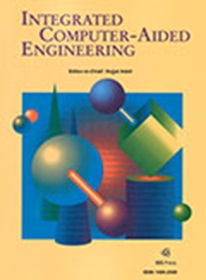在具有高速移动要求的高密度 6G 垂直市场中实现高效、有序的服务质量管理
IF 5.3
2区 计算机科学
Q1 COMPUTER SCIENCE, ARTIFICIAL INTELLIGENCE
引用次数: 0
摘要
根据设想,未来的 6G 网络将支持非常异构和极端的应用(称为垂直应用)。例如,比特率可能超过每秒 1 太比特的进一步增强型移动宽带通信,或端到端延迟必须低于 100 微秒的极其可靠的低延迟通信。为实现超高服务质量,6G 网络通常配备冗余资源和智能管理机制,以确保所有设备都能获得预期性能。但这种方法并不可行,也不适合所有垂直行业。具体来说,在 6G 场景中,移动设备的速度预计将超过每小时 500 公里,设备密度将超过每平方公里 1000 万台设备。在这些垂直行业中,资源不能冗余,因为设备数量如此庞大,对服务质量的要求正在物理层面上推动技术的有效性能。另一方面,高速移动使得智能机制无法发挥作用,因为设备的移动和发展速度超过了这些智能解决方案的通常收敛时间。我们需要新技术来填补这一空白。因此,我们在本文中提出了一种编排式服务质量管理解决方案,即 6G 基站实时预测垂直网络的演进,并提前运行轻量级分布式优化算法,从而管理资源消耗,确保所有设备都能获得所需的服务质量。预测机制包括移动性模型(马尔科夫模型、贝叶斯模型等)和时变通信信道模型。此外,还考虑了流量预测解决方案,以提前探索实现的服务质量。优化算法根据预测的未来垂直情况计算出有效的资源分配,从而使设备根据提出的流量模型达到预期的服务质量。此外,还提供了基于仿真工具的实验验证。结果表明,对于给定的服务质量,建议的方法最多可减少 12% 的网络资源消耗。本文章由计算机程序翻译,如有差异,请以英文原文为准。
Efficient and choreographed quality-of- service management in dense 6G verticals with high-speed mobility requirements
Future 6G networks are envisioned to support very heterogeneous and extreme applications (known as verticals). Some examples are further-enhanced mobile broadband communications, where bitrates could go above one terabit per second, or extremely reliable and low-latency communications, whose end-to-end delay must be below one hundred microseconds. To achieve that ultra-high Quality-of-Service, 6G networks are commonly provided with redundant resources and intelligent management mechanisms to ensure that all devices get the expected performance. But this approach is not feasible or scalable for all verticals. Specifically, in 6G scenarios, mobile devices are expected to have speeds greater than 500 kilometers per hour, and device density will exceed ten million devices per square kilometer. In those verticals, resources cannot be redundant as, because of such a huge number of devices, Quality-of-Service requirements are pushing the effective performance of technologies at physical level. And, on the other hand, high-speed mobility prevents intelligent mechanisms to be useful, as devices move around and evolve faster than the usual convergence time of those intelligent solutions. New technologies are needed to fill this unexplored gap. Therefore, in this paper we propose a choreographed Quality-of-Service management solution, where 6G base stations predict the evolution of verticals at real-time, and run a lightweight distributed optimization algorithm in advance, so they can manage the resource consumption and ensure all devices get the required Quality-of-Service. Prediction mechanism includes mobility models (Markov, Bayesian, etc.) and models for time-variant communication channels. Besides, a traffic prediction solution is also considered to explore the achieved Quality-of-Service in advance. The optimization algorithm calculates an efficient resource distribution according to the predicted future vertical situation, so devices achieve the expected Quality-of-Service according to the proposed traffic models. An experimental validation based on simulation tools is also provided. Results show that the proposed approach reduces up to 12% of the network resource consumption for a given Quality-of-Service.
求助全文
通过发布文献求助,成功后即可免费获取论文全文。
去求助
来源期刊

Integrated Computer-Aided Engineering
工程技术-工程:综合
CiteScore
9.90
自引率
21.50%
发文量
21
审稿时长
>12 weeks
期刊介绍:
Integrated Computer-Aided Engineering (ICAE) was founded in 1993. "Based on the premise that interdisciplinary thinking and synergistic collaboration of disciplines can solve complex problems, open new frontiers, and lead to true innovations and breakthroughs, the cornerstone of industrial competitiveness and advancement of the society" as noted in the inaugural issue of the journal.
The focus of ICAE is the integration of leading edge and emerging computer and information technologies for innovative solution of engineering problems. The journal fosters interdisciplinary research and presents a unique forum for innovative computer-aided engineering. It also publishes novel industrial applications of CAE, thus helping to bring new computational paradigms from research labs and classrooms to reality. Areas covered by the journal include (but are not limited to) artificial intelligence, advanced signal processing, biologically inspired computing, cognitive modeling, concurrent engineering, database management, distributed computing, evolutionary computing, fuzzy logic, genetic algorithms, geometric modeling, intelligent and adaptive systems, internet-based technologies, knowledge discovery and engineering, machine learning, mechatronics, mobile computing, multimedia technologies, networking, neural network computing, object-oriented systems, optimization and search, parallel processing, robotics virtual reality, and visualization techniques.
 求助内容:
求助内容: 应助结果提醒方式:
应助结果提醒方式:


